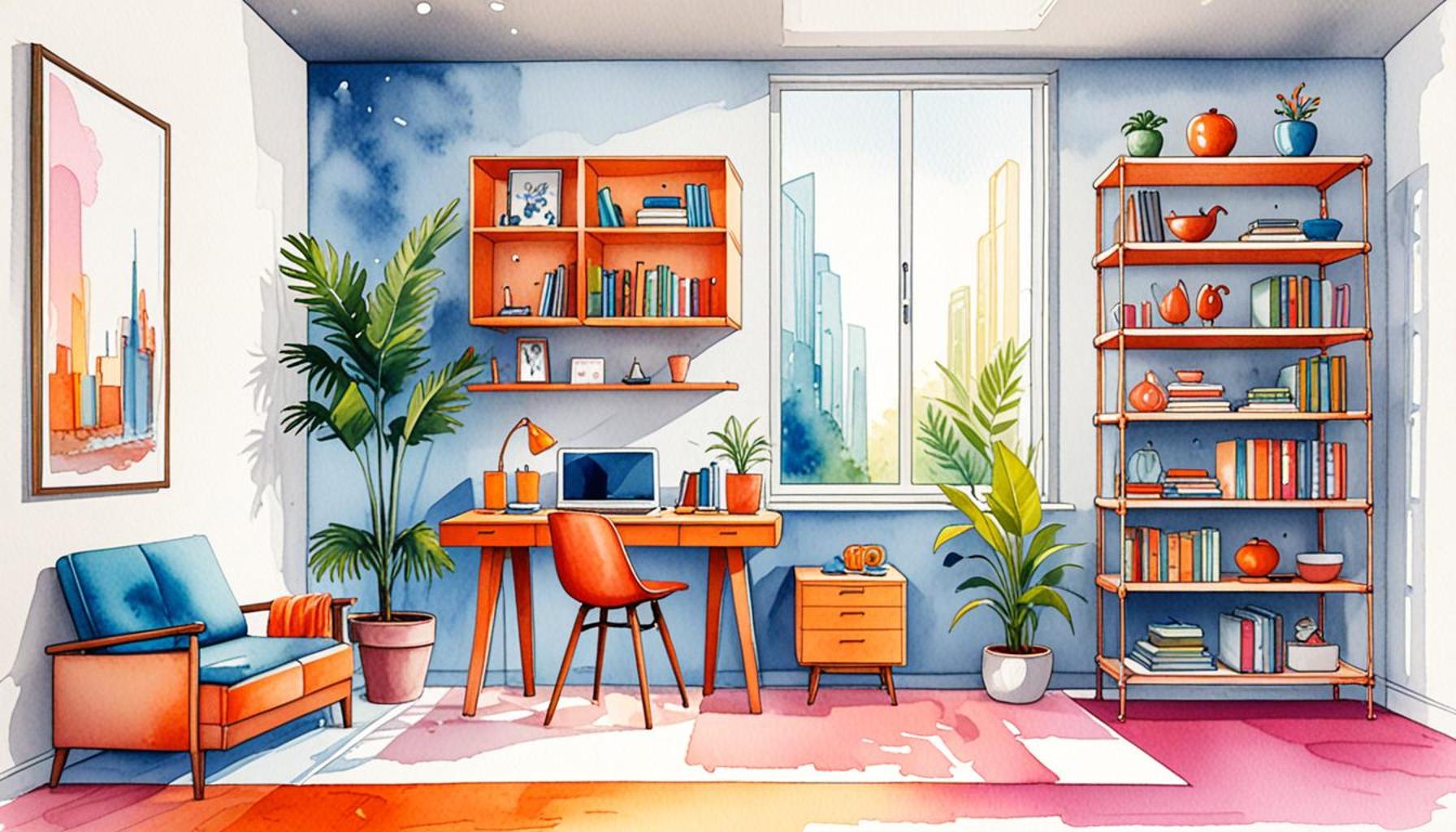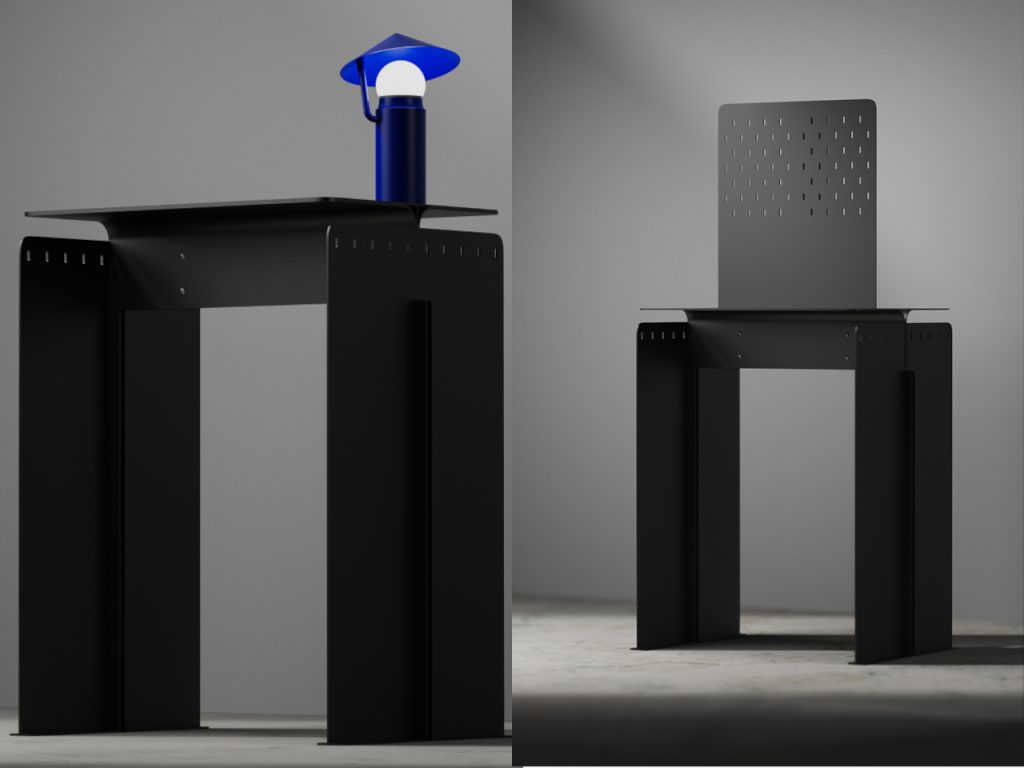The Power of Vertical Design: How Multifunctional Furniture Transforms Spaces

Understanding Vertical Design
As urban populations surge, particularly in cities like Lagos and Abuja, the demand for innovative living solutions becomes increasingly apparent. Traditional layouts often lead to cramped and uncomfortable living environments. However, the application of vertical design principles aims to revolutionize how we utilize our spaces, particularly through the implementation of multifunctional furniture.
Benefits of Vertical Design
The advantages of embracing vertical design extend far beyond mere aesthetics. Below, we explore key benefits in more detail:
- Space Optimization: Vertical design encourages homeowners and renters to think beyond the traditional horizontal layout. For instance, installing shelves that reach ceiling height not only provides additional storage but also draws the eye upward, creating an illusion of greater space. A practical example might include wall-mounted bookcases that hold everything from books to decorative items, effectively clearing away clutter from surfaces.
- Versatile Functionality: Modern furniture now often serves multiple purposes. For example, a coffee table designed with hidden storage space can efficiently hold magazines, remote controls, and even blankets. Additionally, furniture pieces like futons or Murphy beds can transform a living room into a guest bedroom, proving indispensable in urban apartments where every square meter counts.
- Stylish Alternatives: Vertical design opens the door to unique, creative design choices. In Nigerian homes, locally crafted vertical gardens not only beautify a space but also improve air quality. Items such as tall, narrow cabinets or chic vertical dressers can add a modern touch while also serving functional roles.
Local Inspirations and Innovations
In Nigeria’s burgeoning interior design scene, local artisans are incorporating traditional motifs into vertical furniture, merging culture with contemporary design. For instance, a tall, carved wooden stool could serve as both a traditional seating option and decorative artwork. This cultural infusion not only reflects individuality but also enhances the overall narrative of the space.
As we explore the depths of vertical design, it becomes clear that this approach is not only about maximizing functionality but also about crafting spaces that resonate personally with their inhabitants. From compact urban living to expansive offices, the adoption of this design philosophy can lead to remarkable transformations. Stay tuned for further insights that delve into specific design ideas and solutions, ultimately guiding you toward creating a beautiful and multifunctional living or working environment.
LEARN MORE: This related article may interest you

Embracing Multifunctionality in Urban Living
As urban living becomes the norm, especially in Nigeria’s bustling cities, the concept of multifunctional furniture emerges as a beacon of innovation—addressing both space constraints and aesthetics. The challenge of limited square footage forces residents to rethink how they furnish their homes and offices, paving the way for creative solutions that not only save space but enhance the overall living experience.
Key Features of Multifunctional Furniture
Multifunctional furniture is designed with the intent to serve multiple purposes, effectively merging form and function. Let us delve into some essential features that make these pieces stand out:
- Transformative Design: Pieces like extendable dining tables can expand for gatherings or compress to free up space during single-person meals, exemplifying adaptability in design. In urban Nigerian homes, this flexibility is especially vital as family and friends often gather, necessitating furniture that can accommodate varying numbers.
- Smart Storage Solutions: Storage is a perennial challenge in compact living spaces. Multifunctional furniture often comes with built-in storage compartments. For instance, bed frames with drawers underneath provide a stylish solution for stowing away linens and out-of-season clothing, keeping homes clutter-free and organized.
- Environmental Awareness: As sustainable living gains traction, many brands are sourcing eco-friendly materials to create multifunctional furniture. This approach not only conserves space but also aligns with the values of many contemporary Nigerian consumers who wish to minimize their ecological footprint.
The transformative nature of multifunctional furniture extends beyond practicality; it also contributes to a more fluid and expansive feel within small living spaces. For example, a daybed can serve as both a couch during the day and a sleeping area at night, offering versatility that is especially appealing in urban settings where every square meter is critical.
Local Trends in Multifunctional Design
In Nigeria, designers are experimenting with local materials and craftsmanship to produce multifunctional furniture that resonates with cultural aesthetics. Traditional weaving techniques can be utilized in the creation of stylish storage ottomans, marrying functionality with cultural heritage. Furniture pieces that reflect Nigeria’s rich artistic background not only serve practical purposes but also tell meaningful stories that enrich the living environment.
The integration of multifunctional furniture is a reflection of the shifting dynamics of modern living. By understanding how these innovative solutions can maximize space while providing versatility, Nigerians can redefine their living spaces to be more comfortable, stylish, and reflective of personal identity. As we continue to explore the world of vertical design, there are ample opportunities for creative expression and functional improvements waiting just around the corner.
| Feature | Description |
|---|---|
| Space Optimization | Multifunctional furniture utilizes vertical space, allowing smaller areas to feel larger and more open. |
| Aesthetic Versatility | These designs blend functionality with style, creating visually appealing environments without sacrificing personal taste. |
With the rise of urban living, maximizing space has become crucial. Multifunctional furniture not only addresses space constraints but also adds a level of sophistication. By using vertical design, one can incorporate shelves, height-adjustable desks, and modular sofas that adapt to various needs. For instance, a vertical storage unit can serve as both a bookshelf and a decorative piece, elevating the room’s character. This innovative approach not only enhances efficiency but also promotes sustainability by encouraging fewer, yet more functional, furniture purchases. Attention to multifunctionality in design plays a pivotal role in promoting a minimalist lifestyle while also ensuring comfort and style are not compromised. Stay tuned as we delve deeper into the transformative effects this trend has on both urban and suburban spaces.
SEE ALSO: Click here to read another article
Vertical Design: Maximizing Space through Height
In a world where the footprint of living and working spaces is often limited, vertical design has emerged as a crucial strategy for maximizing utility and style. This design approach utilizes vertical space to its fullest potential, allowing homeowners and businesses to create a sense of openness while effectively housing a myriad of functions within a confined area. In Nigerian cities where every inch counts, understanding how to take advantage of vertical design can not only enhance the aesthetic appeal of a space but significantly improve its functionality.
The Rise of Vertical Storage Solutions
Vertical storage solutions, including shelves, cabinetry, and wall-mounted units, are increasingly popular in Nigerian homes and offices. By transferring the focus from floor space to wall-mounted structures, residents can free up essential footprints for movement and creativity. For example, wall-mounted bookshelves can serve not only as storage for books but also as decorative displays for cherished artifacts or plants, merging practicality with artistry.
Beyond aesthetics, vertical storage is easier to access than ever, with many designs incorporating ladders or adjustable components, which brings functionality to the forefront. Innovative designs are also emerging, such as staircases with built-in drawers or bookshelves. Such featured multipurpose staircases are particularly fitting for Nigerian homes that embrace creativity while elevating their compact living concepts.
Adjustable and Expandable Furniture for Compact Spaces
In the dynamic urban landscape, the need for adaptable furniture that can transition from one use to another is paramount. Moreover, adjustable and expandable furniture allows families to respond to their changing needs without the burden of constant replacement. Consider a tall dining table that transforms into a desk, facilitating work-from-home arrangements during the day before serving as a gathering space for family meals at night. These functionally fluid designs are not only efficient but also save money by extending the lifespan of each furniture piece.
In Nigeria where social interactions are essential, multifunctional furniture that incorporates collapsibility or extensibility creates communal environments without the need for an expansive layout. A sofa bed, for example, can transform a living room into a guest room, accommodating friends or family with ease. This dual-functionality is especially appreciated in Nigerian households where hosting is deeply ingrained in the social fabric.
Integrating Sustainability with Vertical Design
The environmentally conscious consumer is driving an uptick in multifunctional furniture that incorporates sustainable practices. The connection between vertical design and sustainability in furniture production cannot be overstated. Designers are increasingly gravitating toward reclaimed woods, local sustainable materials, and low-impact manufacturing processes. Furniture that serves multiple purposes not only minimizes waste but also appeals to the growing demographic of eco-friendly households.
Nigerian artisans, who draw inspiration from traditional crafts and modern techniques, are leading the way in this sustainable movement. By prioritizing local materials and labor, they are able to produce unique furniture pieces that resonate with both contemporary aesthetics and the local culture. This trend not only contributes to sustainability but also supports local economies and craftsmanship.
As the trend of multifunctional furniture and vertical design continues to gain momentum, the potential for creating versatile, stylish, and sustainable living spaces remains endless. In an era where urban space is shrinking, innovative solutions help redefine how individuals and families interact with their environments, ultimately fostering a more harmonious coexistence with the limited resources available.
ADDITIONAL INSIGHTS: Expand your understanding here
Conclusion: Embracing the Future of Living with Vertical Design
In conclusion, vertical design is redefining how we think about space, especially in urban environments where every square meter holds significant value. The integration of multifunctional furniture is more than just a trend; it represents a sustainable and practical solution to modern living challenges faced by many Nigerian households. As homes evolve into dynamic spaces that cater to both work and leisure, the adoption of innovative vertical storage solutions and adjustable furnishings opens up numerous possibilities for enhanced functionality.
Furthermore, by embracing sustainable practices, local artisans are not only preserving cultural craftsmanship but also responding to the increasing demand for eco-friendly design. This connection between vertical design and environmental consciousness fosters a culture of responsible consumption while supporting local economies. Ultimately, the array of benefits from vertical design—maximized space, enhanced utility, aesthetic appeal, and sustainability—encourages us to rethink how we configure our living and working environments.
As we look to the future, understanding and implementing vertical design principles will be crucial in adapting to urbanization trends, allowing us to create harmonious spaces that reflect our lifestyles and values. It is an invitation to innovate, collaborate, and transform the way we live, ensuring that our interactions with our surroundings are not only efficient but also enriching.



